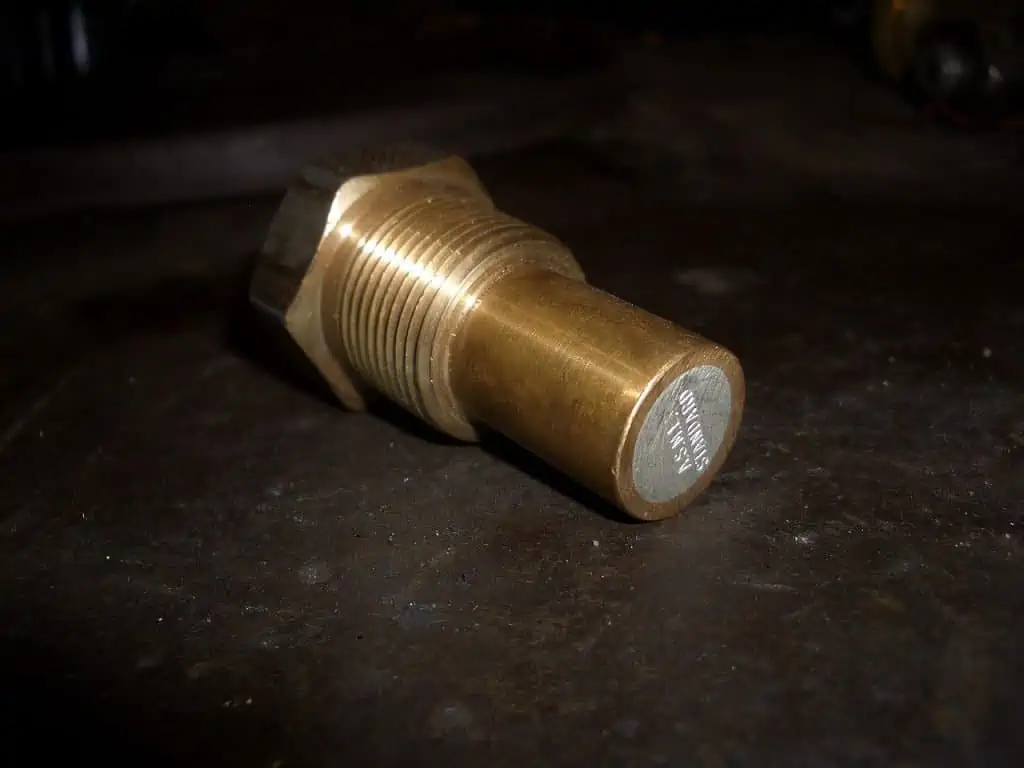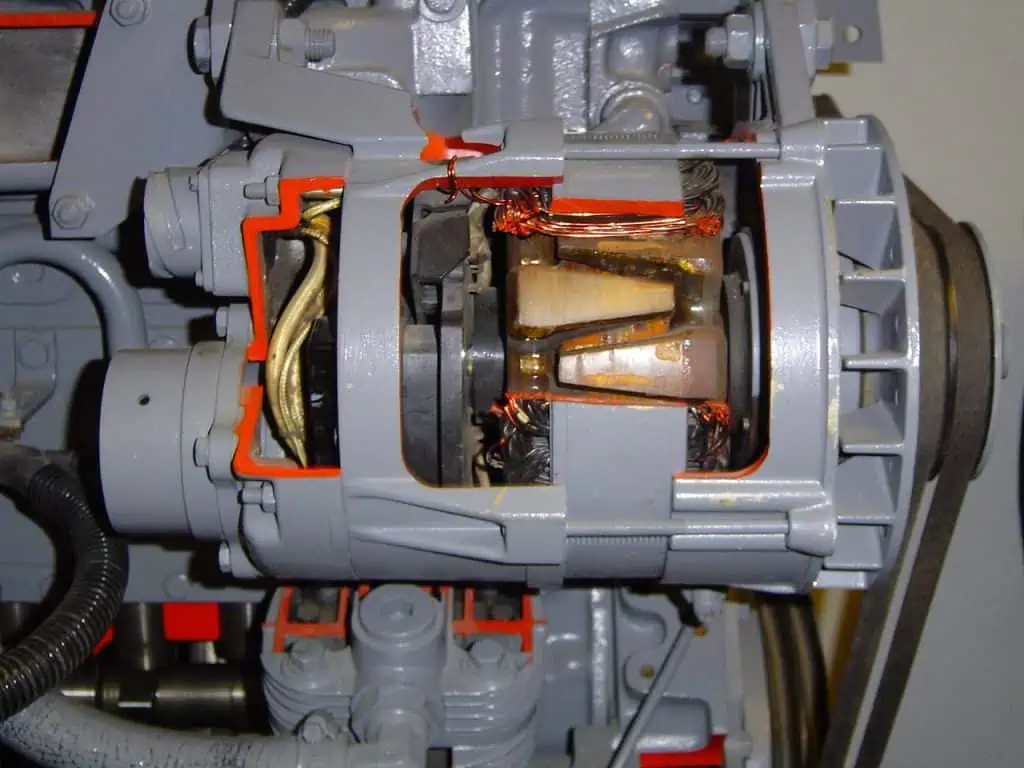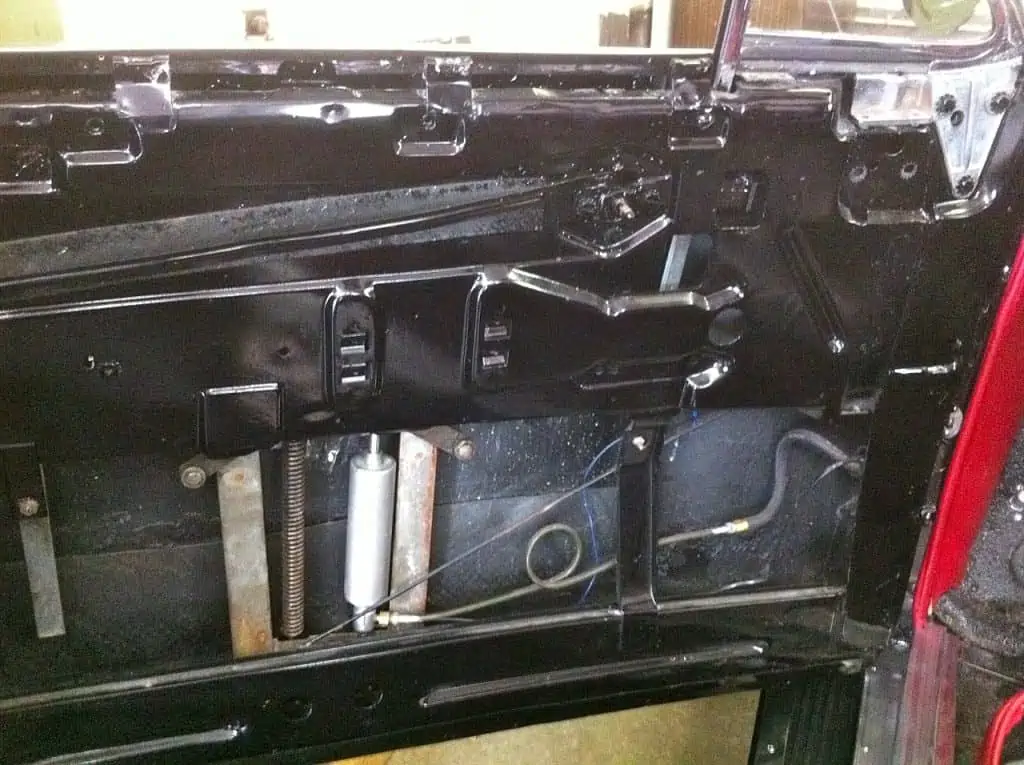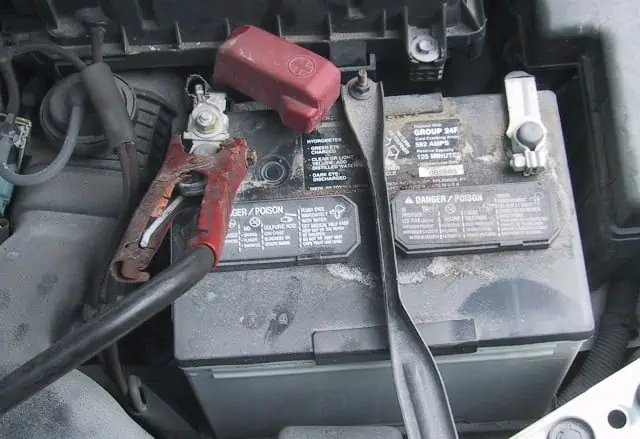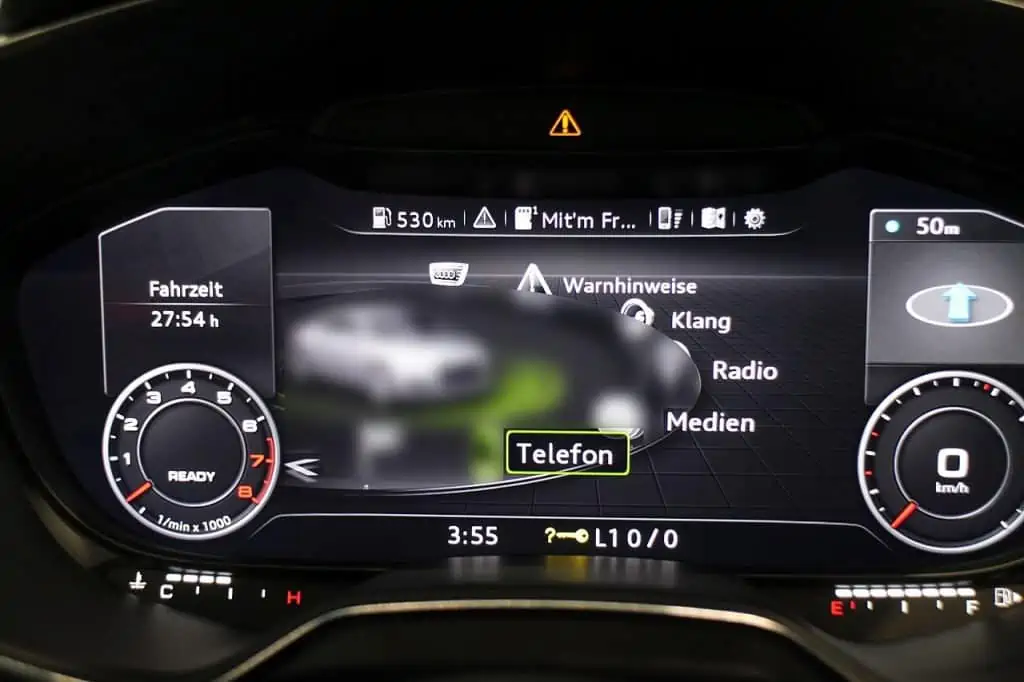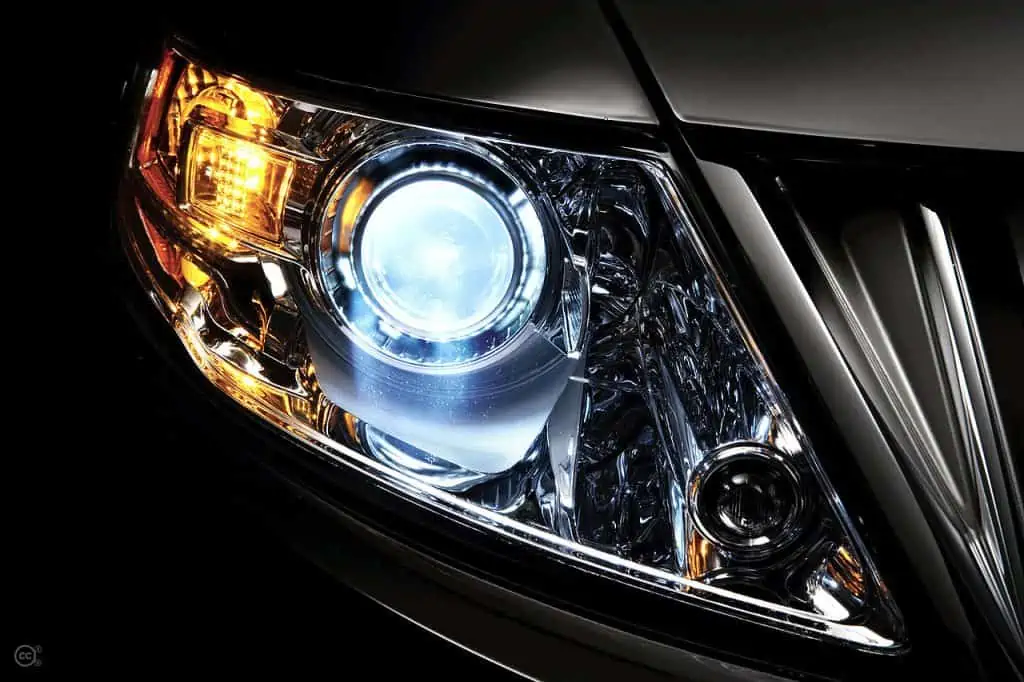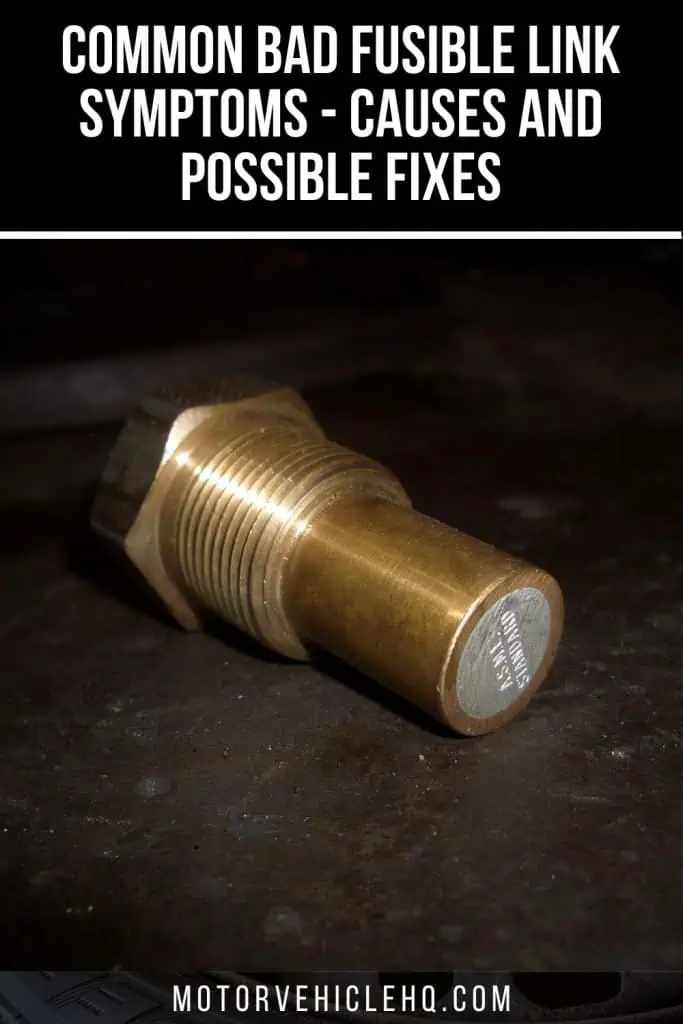You’ll be in danger if your car’s alternator quits working on you out of the blue. Your alternator is in charge of powering your car’s electrical system as well as aiding in the start-up process. As a result, if your alternator isn’t functioning, you won’t be able to utilize your car.
When your alternator stops operating, it may occasionally go bad and require complete replacement. But in other cases, your alternator may simply be unable to function because of a faulty fusible connection. If that turns out to be the case, you’ll need to act quickly to replace it.
When certain internal malfunctioning issues generate an excessive current flow, the alternator fuse or the fusible link may blow out or get damaged. However, how can one spot a weak or blow-fusible link?
If you don’t understand the essentials of the symptoms and signs of a damaged fusible link, you can mistake this issue for another. Your car can suffer other serious effects as a result of this.
That is the reason we are here today. We will be there with you to walk you through the signs of a bad fusible link and advise you on how to fix it. Let’s get into the details now.
An Alternator: What Is It to the Fusible Link?
We want to briefly touch on what an alternator is before we discuss what you should do if you suspect that your car has a damaged fusible link. The alternator in your car is a crucial component, as we just discussed, but not everyone is aware of what it is or, more significantly, what it does. Let’s start there, then.
The alternator in your car has two main purposes: it charges the battery and supplies the necessary power to the electrical system. Your alternator will start working hard as soon as you get into your car and turn the key in the ignition.
The alternator fuse or the fusible link may blow out or sustain damage when specific internal faulty issues cause an excessive current flow. You can mistake one problem for another if you don’t understand the fundamentals of the symptoms and indicators of a damaged fusible link. This can have additional detrimental repercussions on your car.
In addition to continuing to power your car’s electrical system and charging the battery simultaneously, it will supply the electricity your starter needs to turn on.
Your car’s battery will lose power far more quickly than it should if the alternator isn’t functioning properly.
For a short while, you might be able to get away with driving a car that has a damaged alternator, but it normally doesn’t take long for it to quit generating the power that your battery and the electrical system required.
Because of this, you must maintain excellent alternator condition. It’s also the reason why, if a poor fusible link ever occurs, you should be concerned.
A Fusible Link: What Is It In a Car?
A safety feature put in a vehicle’s electrical system is a fusible link. The purpose of this device is to safeguard the electrical system from harm caused by overheating.
If the current traveling through the fusible link rises too much, it will “blow” or melt. By doing so, the circuit will be broken and additional electrical system damage will be avoided.
Typically positioned close to the battery, fuses can safeguard the entire electrical system there.
Additional fusible connections could occasionally be found in other areas of the electrical system, like next to the alternator or starting motor. These extra connections safeguard particular electrical system circuits.
The particular conductor used to create fusible linkages has a high melting point. Usually constructed of copper or aluminum, this conductor.
The positive terminal of the battery is linked to one end of the fusible link, which has two ends, and an electrical system component that has to be protected is attached to the other end.
When everything is operating as it should, very little current passes through the fusible link. The electrical system will experience issues like a short circuit, which will result in an increase in the current passing through the fusible link.
Fusible links “blow” or melt when the current passing through them reaches a specific threshold. As a result, the circuit is broken, protecting the electrical system from further harm.
Fusible links are a critical component of modern vehicles’ safety systems. They can be used to safeguard individual circuits or the entire electrical system.
Please refer to your owner’s manual or seek the advice of a skilled technician if you have any queries about fusible links or believe your car would benefit from one.
What Purpose Does the Fusible Link Serve In a Car?
A fuse is typically employed in electrical equipment to protect other components. Typically, the fuse used wires made of a substance that could easily melt.
To save the remaining electrical wiring, this fuse would melt under certain overload current settings. This would then cause the electric circuit to burst.
Insulated (low-voltage) cable-fusible connections, like these fuses, can shield the rest of the wiring system by cutting the circuit if they experience excessive current and the fuse melts. The components of your car will remain secure as a result.
A car’s alternator by Piero / CC BY-SA 3.0. Your alternator may occasionally malfunction and need to be completely replaced when it quits working. But in other circumstances, a bad fusible link may simply prevent your alternator from working. You must move promptly to replace it if that turns out to be the case.
How Can You Tell If You Have a Bad Fusible Link In Your Car?
Let’s talk about the fusible link and its function now that you understand what an alternator is and how it powers your car. Although not every car has a defective fusible link, the majority of them do.
An alternator requires the installation of fusible connections to function. They are tiny fuses that are used to manage and maintain alternators. You may find them in the fuse boxes of autos.
But eventually, you might find that your car has a defective fusible link, and you’ll be able to tell relatively quickly when that happens. Usually, when the fuse for your alternator blows, it will no longer operate.
Both an internal power surge in your car and old age could cause the fuse to explode. In either case, if you have a faulty fusible link, you will be forced to replace the fuse.
The good news is that repairing a damaged fusible link is far simpler than doing the same for an alternator. The majority of folks who experience alternator problems hope that they are merely suffering a bad fusible link because it is also significantly less expensive.
If you think your alternator is having issues due to a bad fusible link, you should replace it straight away to see if it solves the problem.
Why Does a Fusible Link Go Bad?
Numerous factors can cause a fusible connection to fail. Electrical short circuits are the most frequent culprit. A wire may rub against a metal surface or come into contact with another wire to do this.
Excessive current draw is another frequent factor in blown fusible link incidents. This might occur if a piece of electrical equipment, such as the headlights, uses more electricity than it was intended to. It might also occur if the charging system has a flaw, like a defective alternator.
Finally, age and corrosion alone can cause fusible connections to blow. The conductor material in the fusible link will degrade with time and lose some of its capacity to manage current flow through it. Even if there is no short circuit or excessive current demand, this could still lead to the fusible link blowing.
Which are the Common Bad Fusible Link Symptoms?
How can you tell if you have a bad fusible link in your car? Power windows, radio and music, batteries, central and wiper locking, and alarm lights can all be seen to learn more.
It’s time to check and repair the fusible link after one of these components malfunctions or degrades.
1. The Power Windows Do Not Operate Properly
The power windows in your car are powered by batteries. If its fusible link is damaged, it can be an indication of problems with these components, such as the passenger-side power window not functioning. This makes it difficult to automatically open or close your car’s windows.
This issue may occasionally be caused by faulty batteries or alternators. The alternator is used by the vehicle to generate power while it is operating. Once it malfunctions, the battery is put under extra strain, which causes issues.
But generally speaking, if you have trouble using the power windows, the issue is more likely to be a blown fusible connection than anything else.
Your car’s power windows are run on batteries. If you have a bad fusible link, there may be issues with these parts, which could lead to the passenger-side power window not working, for example. This makes it challenging for your car’s windows to open or close on their own.
Therefore, it would be wise to check thoroughly before investing in a new battery or alternator.
2. Failure of Music and Radio
The majority of people enjoy turning on the radio while driving to listen to music or get the latest news.
However, you are unable to use the radio or turn on the music player to enjoy your trip when the fusible connection in your car becomes weak.
Even with the music player or radio on, there may be pauses in the sound or you may not be able to hear the song.
3. Defective Batteries
The internal battery of the car is charged using a fusible link. As a result, if this component were to malfunction, your vehicle battery would not receive enough charge.
That can be yet another indication that you should replace the bad fusible link with a new one.
As a result, a damaged or bad fusible link fails to charge the battery properly, and as a result, your vehicle may operate improperly or have starting issues.
4. The Wiper and Central Locking Problem
Another common symptom of a blown or damaged fusible link is when drivers discover that their car wipers are not functioning or responding.
Wipers are designed to make your front view clear so you may safely follow your car.
However, if a fusible connection develops a potential problem, these wipers will stop working properly, causing your view to become hazier during snowy or wet weather.
A central locking and wiping system gets its electricity from the alternator and batteries, just like power windows do.
Therefore, a damaged or blown fusible link could cause these components to malfunction. Yet again, it could also be brought on by issues with the alternator or the battery.
Therefore, it’s crucial to check your battery and alternator to ensure they are functioning properly before blaming a faulty fusible link for the issue.
5. Low Lights
While operating, your car uses energy from the alternator but first has to warm up its batteries.
This explains why headlamps dim as soon as the ignition is turned on. Additionally, the battery can’t handle an increased load if your car has a bad fusible link.
Dim lighting would indicate this issue. Consequently, if your headlights fade, the cause could be a bad fusible connection there.
6. Dash Warning Lights are On
Alarming lights in a vehicle can be turned on by a faulty fusible connection. Therefore, a fusible failure link is to blame if you notice that your warning engine light is on.
What Steps Should You Take After Detecting Bad Fusible Link Symptoms?
Always inspect and identify the problem very away if you see any symptoms of a bad fusible link. Then make the changeover to the new one is required.
An electrical fusible link is used to charge the car’s internal battery. The battery wouldn’t get enough charge if this part broke down. That’s a sign that you need to swap out the bad fusible link for a new one. Your car may operate incorrectly or have starting problems if the battery is not charged properly due to a bad fusible link.
It may appear simple to replace a defective or blown fusible link because all you have to do is take out the old, damaged link and then install the new one.
But if you don’t understand the methodical, step-by-step procedure to do it, it may become complicated and time-consuming.
So let’s follow these straightforward instructions to fix the fusible connection problem.
Diagnosing Bad Fusible Link Symptoms
Locate the battery beneath the hood, close to a fusible connection, and then look for a wire that is smaller and more rubbery than the others to get a precise diagnosis.
Additionally, you can search for the wire’s “fusible link” tag name.
After having already verified, examine this wire for any potential damage.
Examining the Electricals
To examine the electrical link, you may use the continuity setting on a multimeter or voltmeter.
Connect one lead to the electrical circuit’s end for the experiment and the other lead to the circuit’s other end. Now check to see if any discontinuity exists or not.
If not, the fusible connection is certainly the problem. If the response is affirmative, the problem isn’t with the fusible connection and you need to look more for further potential explanations.
Remember not to use 12V continuity test wands when performing the electrical discontinuity test since not all electrical circuits are built with 12 volts by default.
As a result, you should check and double-check before choosing the test wand.
What Is the Procedure to Replace a Bad Fusible Link?
One of the easiest auto repair tasks available is the actual replacement of a damaged fusible link. Any blown fuse can be easily replaced and doesn’t call for a lot of expertise or technical knowledge.
But it’s important to note that the typical fuse box in a modern car now has more than 40 fuses. This can make it significantly more difficult than before to replace a bad fusible link.
Still, if you follow the appropriate procedures, you should be able to complete the task quickly. Here are the five procedures you should follow if your car’s fusible link is damaged.
Step 1: Buy a New Fusible Link
Picking up a replacement fusible link for your car is the first thing you should do if it has a bad fusible link. Fortunately, finding a fuse for your car is not difficult even if you don’t have a lot of experience doing it.
You may either get a fusible link online or go to any auto parts store and ask them to give you one for your particular make and model of vehicle.
Step 2: Find the Location of Your Fusible Link By Using the Owner’s Manual for Your Car
When was the last time you took out your car’s owner’s manual and browsed through it? If you haven’t done it in a while, find it and browse through it until you come to the section regarding your car’s fuse box. This is the only foolproof method for determining which fuse in your car is linked to your alternator.
A car’s music and radio panel by Robert Basic / CC BY-SA 2.0. As the fusible connection in your automobile weakens, you are unable to use the radio or activate the music player to enjoy your journey. There can be pauses in the sound or you might not be able to hear the song even with the music player or radio on.
You should be able to find the location of your fusible link if you locate the part in your owner’s manual that is specifically dedicated to your fuse box. A diagram that pinpoints the location of your fusible connection should be set up.
The graphic ought to inform you of where more fuses are located in your fuse box. If any of them ever blow, you might need to access them later, so don’t be afraid to note this section in your owner’s handbook for future use.
Step 3: Locate and Open the Fuse Box In Your Car
Finding the fuse box itself will be the next step after you are aware of where the fusible link is in your fuse box. A car’s fuse box may be located in any number of locations.
The fuse box may occasionally be located under your hood. However, in other cases, you might need to dig around in storage or underneath a seat in your vehicle. Again, you ought to be able to locate it by reviewing your owner’s manual.
Once you’ve located your fuse box, you should use either your fingers or possibly even a small screwdriver to unclip the lid. That ought to be sufficient to pry open the fuse box and allow you to access your fusible link for replacement.
Just be careful when handling the fuse box lid because you don’t want to snap any pieces off and then have difficulties re-closing it.
Step 4: Uninstall the Car’s Bad Fusible Link
By this time, you should have the fuse box for your car opened and be aware of the location of your fusible link. It will be simple for you to locate it in the fuse box and then take it out.
Like with your fuse box, you can usually remove a fusible link with your fingertips, but occasionally a tool will be needed. The objective is to remove it from your fuse box without harming either it or the fusible link itself.
Check to make sure you have a bad fusible link and not a fusible link that is still functioning properly before permanently removing your fusible link and replacing it with a new one.
If your fuse appears to still be functional, you may need to start over and determine if your alternator is experiencing other problems.
Step 5: Substitute Your Bad Fusible Link with a New One
You can replace your current fusible link with the new one you just purchased as long as you can tell that it has blown and needs to be replaced.
Look at the fuse rating on the side of your old fusible link before proceeding, though. Making ensuring that the fuse rating on your new fusible link matches the fuse rating on your old one is important.
You’ll be good to go when it comes to replacing your fusible link if the fuse ratings on your old and new fusible links match.
After inserting your new fuse into the slot where your previous one was, you can close the fuse box again. The process of replacing your damaged fusible link should now be complete.
A Bad Fusible Link: Should You Replace It Yourself?
You might take your vehicle to a mechanic to have them take a look at it if you are aware that you have a bad fusible link in your vehicle. However, you’ll want to handle this auto repair task yourself the majority of the time. When you could replace your broken fusible link yourself for practically nothing, why pay someone else a lot of money to do it?
Low lights from a car headlamp by Ford Motor Company / CC BY 2.0. The batteries in your automobile must first warm up before the alternator can start using energy. Because of this, headlights start to dim as soon as the ignition is turned on. If your car has a bad fusible link, the battery can also support a higher load. This problem would be apparent in low illumination. A poor fusible connection there could be the reason why your headlights fade.
Having said that, if you’re not experienced working with fuses, you might not want to perform this specific auto repair operation. If you lack the dexterity to take out and replace fuses, you might want to avoid doing it.
Not everyone is cut out for the job, and if you don’t replace a damaged fusible link correctly, you can wind up inflicting more harm than good.
Doing a bad fusible link replacement isn’t particularly difficult, but, in general. In most cases, you can do the task in a few minutes and move on with your day.
How Much Does a Replacement Fusible Link Cost?
People occasionally become anxious when they learn that they must replace a fusible link when their car has a bad fusible link. It seems like a pricey job, don’t you think?
However, the truth is that the average vehicle fuse will only run you $20, tops. It’s a major factor in the recommendation that you attempt to swap out a damaged fusible link on your own. You won’t have to spend a lot of money on it.
However, even if you need to replace a fuse because of a defective fusible link, the cost of the repair should be manageable. Depending on the type of vehicle you have, the majority of auto repair companies will replace the fusible link for about $100.
What Should You Do If the Bad Fusible Link Has Been Replaced But Your Alternator Still Doesn’t Work?
You should seek the assistance of experts if you go into the trouble of replacing a broken fusible link only to discover that your alternator is still giving you problems.
Your alternator might then be experiencing another issue. Contact an ASE-certified mechanic and ask them to evaluate and perhaps replace your alternator rather than trying to fix your car yourself again.
Is Driving with a Bad Fusible Link Safe?
Driving while having a bad fusible link is not safe. Fusible links can blow, which indicates an electrical issue with the circuit.
Driving with a blown link increases the chance of causing additional electrical system damage. A blown fusible link may occasionally start a fire.
How to Stop a Fusible Link from Becoming Bad Prematurely
You can take a few steps to lessen the likelihood of fusible connections blowing. First, check to see that all of your car’s electrical connections are tidy and secure. Increased resistance from loose or corroded connections might result in a blown fusible link.
Second, refrain from adding any extraneous changes to the electrical system. Short circuits are more likely to occur whenever you add new components or alter the wiring of existing ones.
Consult a trained professional if you are unsure about how to adjust the electrical system correctly.
Finally, make sure you frequently check the charging system. An excessive current draw brought on by a charging system issue may blow a fusible link.
A malfunctioning fusible link might cause the battery dashboard warning lights in a vehicle to turn on. Therefore, if you discover that your warning engine light is on, a fusible failure link may be at fault.
Consult a trained professional to inspect the charging system if you detect any issues, such as dim lights or flickering gauges.
The Conclusion
In today’s vehicles, fusible connections play a crucial role in the electrical system. A blown fusible link might result in significant electrical issues. The wipers not working, the radio not playing, and the battery dying are all potential signs of a blown fusible link.
A blown link indicates that the circuit has an electrical issue. You run the danger of harming other electrical system components if you keep driving with a blown connection.
A blown fusible link may occasionally start a fire. Therefore, examine your fusible linkages as soon as you become aware of any issues.
Using a multimeter, you can quickly and easily diagnose the fusible link. The fusible link needs to be changed if it is discovered to be blown. Always unplug the battery before performing any electrical system repairs. Use the proper size and kind of wire when replacing a fusible link.
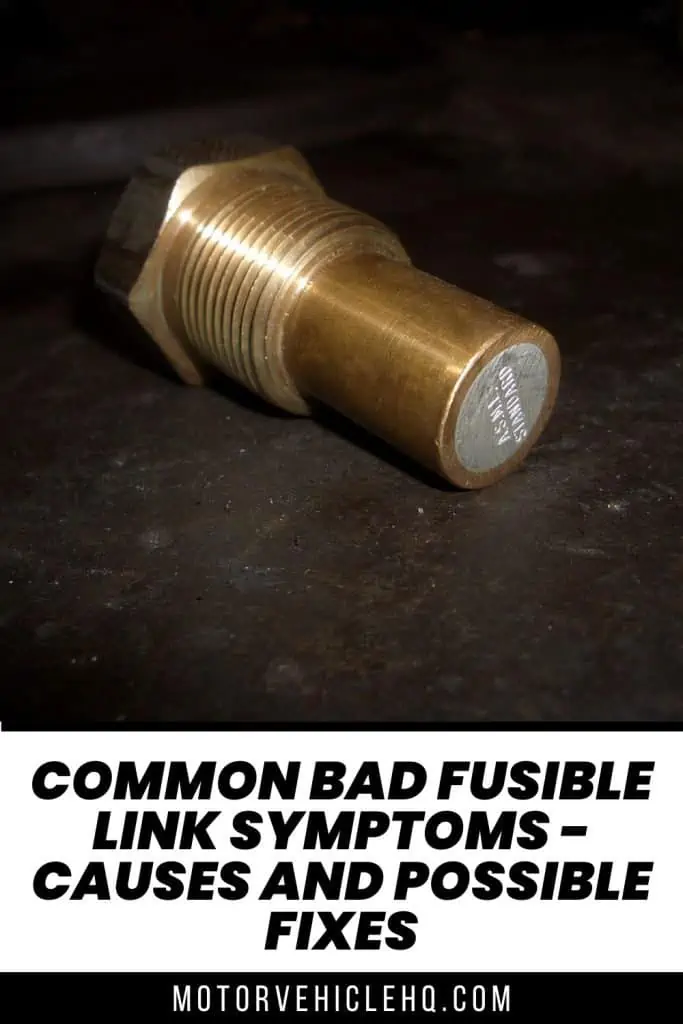

Jim Wicks is the founder of MotorVehicleHQ. With over two decades of experience in the automotive industry and a degree in Automotive Technology, Jim is a certified car expert who has worked in various roles ranging from a mechanic, car dealership manager, to a racing car driver. He has owned more than 20 cars over the past 15 years. Ask him about any vehicle you see on the road and he can tell you the make, model and year. He loves the aesthetics of all things cars, and keeps his vehicles in pristine condition.
In his free time, Jim enjoys getting his hands dirty under the hood of a classic car or taking long drives along the country roads. His favorite car? A 1967 Shelby GT500, a true classic that, according to Jim, “represents the pure essence of American muscle.”
